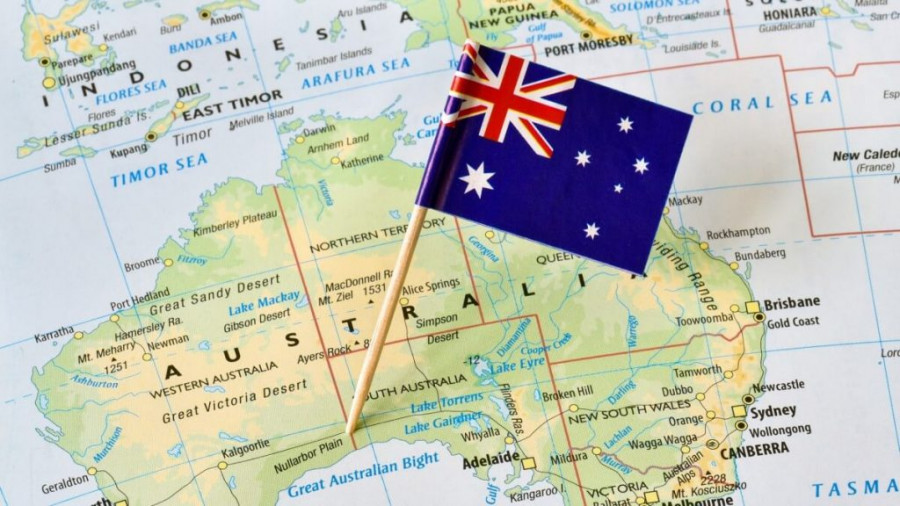
The Australian dollar, paired with the US currency, is testing the resistance level of 0.6850, corresponding to the upper line of the Bollinger Bands indicator on the D1 timeframe. And yesterday's northward impulse of AUD/USD was due to the contradictory outcomes of the June Federal Reserve meeting today. In that case, the triumph belongs to the "Australian Nonfarm Payrolls." The Australian labor market report turned out to be better than expected and, in some aspects, much better. The "green shade" of the release helped buyers of the pair initiate another northward push to consolidate in the area of the 68th figure. The report became another argument for raising the interest rate at the next July meeting.
The "Australian Nonfarm Payrolls" indeed surprised traders with its strong figures. All components of the release came out in the "green zone," much better than expected. For example, the unemployment rate in Australia decreased to 3.6% in May after a rise to 3.7% in April (the forecast predicted an increase to 3.8%). It is also necessary to note the positive dynamics of employment growth. The overall indicator was much better than forecasts, reaching 75,000 (compared to a forecasted increase of only 18,000). Moreover, the structure of this indicator indicates that the overall growth was driven by both full-time and part-time employment (a ratio of 61.7/14.3 thousand). It is known that permanent positions usually offer a higher level of wages and greater social security compared to temporary jobs. Therefore, the current trend in this regard is exclusively positive.
In other words, today's published labor market report turned out to be strong in all aspects: it reflected not only employment growth but also a decrease in unemployment against the backdrop of an increase in the share of the working-age population (the indicator reached 66.9% - a record value in the history of relevant observations).
Such a result allowed experts to start factoring in another 25-basis-point increase in the interest rate by the Reserve Bank of Australia at the July meeting.
Rising hawkish expectations
The rise in hawkish expectations is not only associated with improving Australia's labor market situation. The latest inflation data also favored the Aussie, allowing buyers of AUD/USD to turn the situation in their favor. The report on the April Consumer Price Index's growth was published at the end of May. It came out in the "green zone": contrary to the forecasts of most experts regarding a decrease in the indicator, the CPI increased significantly. For instance, despite the forecasted decline to 6.2%, the index rose to 6.8% monthly. The indicator had consistently decreased for three months (January, February, and March) but turned northward again in April.
Here it is necessary to recall the main theses the Reserve Bank of Australia voiced at the June meeting. The regulator pointed out that the upward risks to the inflation forecast have increased, so the RBA may need "some further" tightening of monetary policy. According to Philip Lowe, the interest rate hike should provide "greater confidence that inflation will return to the target level in a reasonable timeframe." According to central bank officials, further prospects for tightening monetary policy will depend on how the economy and inflation develop.
Given such a disposition, it can be assumed that next month the Reserve Bank will once again present a "hawkish surprise," especially if June inflation also turns out to be in the "green zone."
By the way, today, in addition to the "Australian Nonfarm Payrolls," another equally important macroeconomic indicator was published: expected inflation calculated by specialists from the Melbourne Institute. The indicator, which is a good gauge of households' current inflation sentiments, has steadily risen for the past three months. In June, it again entered the "green zone," rising to 5.2% compared to a forecasted increase of 4.8%. This "warning signal" indicates that the RBA may decide on another round of rate hikes in July.
Conclusions
Considering the pause in the Federal Reserve's rate hikes and the unclear prospects for resuming a hawkish stance, such an information background for the Aussie allows buyers of AUD/USD to move forward, developing a northward push.
Technical analysis also speaks in favor of long positions. On the D1 timeframe, the pair is located at the upper line of the Bollinger Bands indicator and above all the lines of the Ichimoku indicator, which shows a bullish "Parade of Lines" signal. The pair maintains the potential for further growth towards the first resistance level at 0.6920 (upper line of the Bollinger Bands indicator, coinciding with the upper boundary of the Kumo cloud on the W1 timeframe). Breaking through this level will open the way to the 70th figure area.